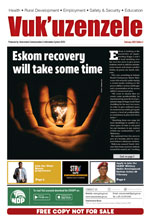Feb 2023 2nd edition
Feb 2023 2nd edition tsoanaEnglish PDF version
Translations
Afrikaans
isiNdebele
isiXhosa
isiZulu
Sepedi
Sesotho
Setswana
Siswati
Tshivenda
Xitsonga
Ending load shedding together
Ending load shedding together JoyThe Sowetan newspaper recently carried a front page headlined ‘Unplugged’, listing many small businesses around the country that have been crippled by the electricity crisis. The closure of these businesses shows some of the devastating impact of persistent load shedding on people’s livelihoods and on their dreams for a better life.
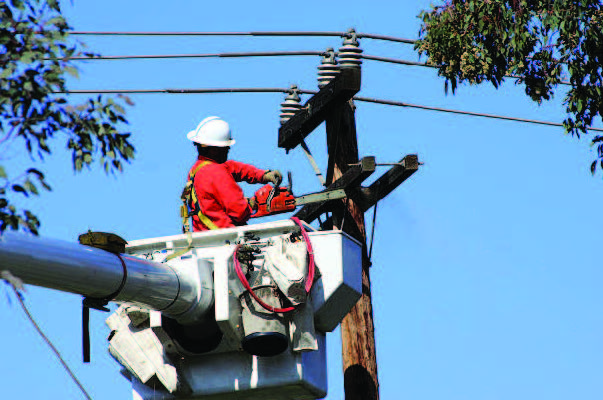 There are many other reports about the effects of load shedding on people’s lives, about the disruption at hospitals, schools, courts, and other government services. We hear about the factories that lose precious hours of production, farmers that are unable to keep their produce fresh, and investments that are being held back.
There are many other reports about the effects of load shedding on people’s lives, about the disruption at hospitals, schools, courts, and other government services. We hear about the factories that lose precious hours of production, farmers that are unable to keep their produce fresh, and investments that are being held back.
As loadshedding continues to wreak havoc on businesses, households and communities, the last thing South Africans want to hear are excuses or unrealistic promises. The demands for an immediate end to power cuts are wholly understandable. Everyone is fed up.
However, we in the grip of an energy crisis that has been many years in the making.
Though it may be easy to blame our present woes on dysfunctionality at Eskom, a combination of factors have contributed to the crisis. It is important to recall the reasons for the current situation so that our response tackles the causes of our crisis, not just the symptoms.
Lack of investment in new generating capacity, poor power plant maintenance, corruption and criminality, sabotage of infrastructure, rising municipal debt and a lack of suitable skills at Eskom have all created a perfect storm. There can be no sustainable solution without addressing all these factors in combination.
We should not make the mistakes of the past. For many years, critical maintenance was deferred, and our power stations were run too hard in order to keep the lights on. As a country we are now paying the price for these miscalculations.
We must be realistic about our challenges and about what it is going to take to fix them. While we all desperately want to, we cannot end load shedding overnight.
Over the last few days, I have held consultative meetings with representatives of labour, business, traditional leaders, religious leaders and the community constituency. I have also met with premiers, metro mayors and leaders of political parties.
In each of those meetings, I stressed the importance of staying the course, instead of coming up with unsustainable short-term solutions.
I announced a national Energy Action Plan to improve the performance of Eskom’s power stations and add new generation capacity as quickly as possible. This plan was the result of extensive consultation and was endorsed by energy experts as the most realistic path towards ending load shedding.
As we know only too well from the experience of the last few weeks, many of the measures in the plan will not be felt in the immediate term.
That is why we are using every means at our disposal, calling on every resource we have, to get power onto the grid as a matter of extreme urgency.
Eskom’s fleet of coal-fired power stations supplies the bulk of our energy needs. That is why there is a singular focus in Eskom on improving plant performance. A team of independent experts is conducting a diagnosis of the problems at poorly performing power stations and taking action to improve plant performance. Six power stations have been identified for particular focus over the coming months to recover additional capacity.
Eskom is also working to connect Kusile Unit 5 to the grid by September this year. Every urgent effort is being made to restore other units at Medupi, Kusile and Koeberg with significant capacity.
Eskom has imported 300 MW of capacity from neighbouring countries. There are negotiations underway to secure an additional 1,000 MW. Eskom is also working to buy surplus power from companies with available generation capacity for a period of three years.
Government has signed agreements for 25 projects from bid windows 5 and 6 of the renewable energy programme, and these projects will soon be proceeding to construction. Collectively they represent 2,800 MW of new capacity.
To increase the overall supply of electricity, in addition to what Eskom provides, we have taken steps to enable substantial investment by private power producers in new generation capacity. The licensing requirement for embedded generation projects has been removed. Since we first raised the licensing threshold to 100 MW, the pipeline of private sector projects has grown to more than 100 projects with over 9,000 MW of capacity.
We have cut red tape and streamlined regulatory processes, reducing the timeframes for environmental authorisations, registration of new projects and grid connection approvals.
Another major source of new generating capacity are solar panels on the roofs of houses and businesses.
Work will soon be completed on a pricing structure that will allow customers to sell surplus electricity from rooftop solar panels into the grid.
We can all play our part by paying for the electricity that we use. The huge debt owed to Eskom by municipalities badly affects Eskom’s ability to fund critical maintenance.
All the stakeholders I have met without exception, appreciate the seriousness, the depth and the complexity of the challenges we face. They have all expressed their commitment to take whatever measures that are required to restore our electricity supply and get on with the task of improving the lives of the South African people.
While we cannot end load shedding immediately, what is certain is that if we work together with urgency to implement the Energy Action Plan, load shedding will steadily become less and less severe. Through collective action, we will much sooner reach the point where we have enough power to end load shedding altogether.
Eskom recovery will take some time
Eskom recovery will take some time JoyEskom is looking at the possibility of implementing Stages 2 and 3 of load shedding over the next two years to give power stations room to address maintenance issues and ensure predictability of power for South Africans.
 This was according to Eskom Board Chairperson Mpho Makwana who recently spoke during a virtual media briefing on the power utility’s system challenges and a presentation of the power utility’s turnaround plan .
This was according to Eskom Board Chairperson Mpho Makwana who recently spoke during a virtual media briefing on the power utility’s system challenges and a presentation of the power utility’s turnaround plan .
“We want to ensure that we create some predictability by implementing some level of permanent stage of Stage 2 and 3 load shedding for the next two years, in order to give sufficient space for maintenance while giving the country a level of predictability or consistency to plan their lives better.”
“Shuttling from one stage [of load shedding] to another in a short space of time is not good for any business in any context within our communities,” said Makwana.
He explained that this move is part of a broader plan to repurpose Eskom’s old power stations.
Makwana assured South Africans that teams at power stations around the country are “working hard to get better” reliability.
Turning it around
Makwana said Eskom’s recovery plan includes targeted recovery of Kendal, Matla, Majuba, Duvha, Tutuka and Kusile power stations in order to deal with the current load shedding challenges.
“These stations must be prioritised by developing the best talent and sufficient capital.
“Getting the six power stations reliable and the additional unit at Kusile [expected back on the grid in July] will stop load shedding in a period of 24 months as we have previously indicated. We also need to protect and guard the best performing power stations such as Matimba, Medupi and Lethabo so that they do not deteriorate,” Makwana said.
The board chairperson highlighted that although the power utility faces challenges, these are not impossible and he further appealed to all South Africans to co-operate with the power utility as it works towards a turnaround for the benefit of all.
“The support required by Eskom from all South Africans is to use electricity sparingly,” said Makwana.
What has government done to fix the problem?
Since 2018, much has been done to fix the problems in our electricity system:
- Eskom’s board and executive leadership, which had been compromised by state capture, was replaced by qualified individuals.
- Changes to Eskom’s structure to create a separate state-owned transmission company have started. This company will be able to buy electricity from different producers, including Eskom, at a competitive price. This will improve the reliability of supply.
- The renewable energy programme was revived, with 2,200 MW connected to the grid to date and another 6,800 MW at various stages of procurement.
- Regulations were changed in July 2021 to exempt private embedded generation projects of less than 100 MW from having to obtain a licence from the Regulator - NERSA. This is where companies produce electricity for their own use and to sell on to other users. As a result of these changes there are now about 100 such projects in the pipeline with a total capacity of more than 9,000 MW. In December 2022, the 100 MW limit was removed completely.
What can I do to save energy?
- Don’t leave appliances and gadgets on when not needed, switch off the power button.
- When you leave the room or building, remember to switch off the lights.
Ensure that you use energy saving light bulbs (LEDs) which also last longer. - Use the cold water tap rather than engaging the geyser every time.
- Use water with consideration e.g. shower rather than bath – it saves water and energy.
- Make sure your refrigerator and freezer doors have tight seals, are positioned in a cool place, and are not blocked with frost – all of this will help them to function more efficiently.
Letters to the Editor
Letters to the Editor Joy
Miss Pick Up Deliveries at your service
Miss Pick Up Deliveries at your service tsoanaAmid the gloom of her employment contract lapsing as the COVID-19 pandemic took hold in the county and globally in 2020, Busisiwe Sithole saw a gap in a market to establish her now growing business - Miss Pick Up Deliveries.
“During the lockdown we didn't have food delivery services in Richards Bay. So a lot of businesses - especially restaurants - had to just shut down as they didn't have the option of delivery services. I spoke to a couple of people, most of them couldn't really invest in doing in-house delivery, because of the financial circumstances that they were facing at the time,” she says.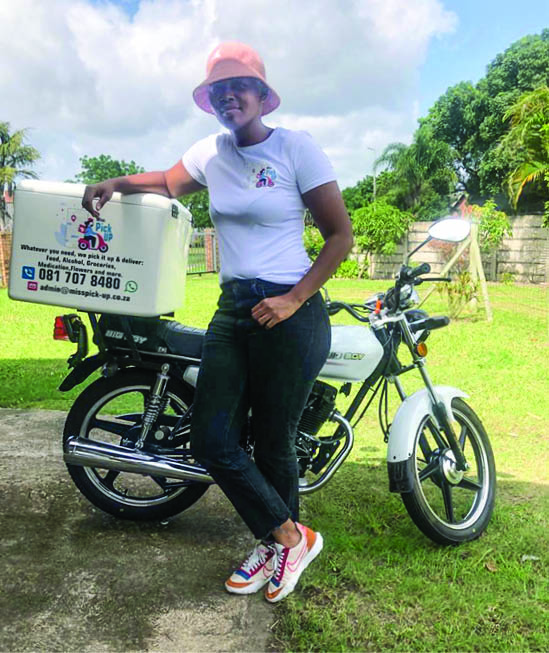
Sithole thought to share her idea of providing a delivery service and soon a number restaurants and businesses agreed to come on board. She then bought two bikes and hired two drivers.
And with that, Miss Delivery was born.
With the easing of lockdown regulations and the re-entry of established operators into the Richards Bay market, business became extremely frustrating for her. She attributes her frustrations to that some of her clients were franchisees which meant that they were compelled by their agreements to use the established services like Mr D and UberEats. This however, did not dampen her resolve to keep her business going. She used her relationships forged during the hard lockdown, focussing on the independent businesses who were not obliged to use established delivery platforms.
"I also had a good relationship with some other franchisees and they preferred using my service rather than the big delivery companies because of the charges involved. We had good agreements between us which were beneficial to all of us,” she said.
Since 2020, the fleet has grown from two motor bicycles to three and an additional two cars. The third motor cycle is an eco-friendly rechargeable bike funded by the National Youth Development Agency (NYDA). These bikes have zero fuel consumption. Going forward, Sithole aims to focus on using the eco-friendly bikes as they can drastically reduce her fuel expenditure costs and are kinder to the environment.
“I've always known about the NYDA but a friend of mine who was attending a course they offered, told me about the support they could provide me. I approached them (NYDA) and I was informed that applications were now online. I did the online application and the very next day I was contacted. I was assisted throughout the process and within a month I got positive feedback.”
She is also partnering with independent contractors who do deliveries using their own vehicles.
"More people want to come on board but I am still working on creating an App. So as soon as the App is up and running, I'll enter into more partnerships," she says.
For more information on the NYDA, visit www.nyda.gov.za or contact 087 158 6345 / 5738.
Recruitment of unemployed youth for the digitization of Department of Home Affairs records
Recruitment of unemployed youth for the digitization of Department of Home Affairs records tsoana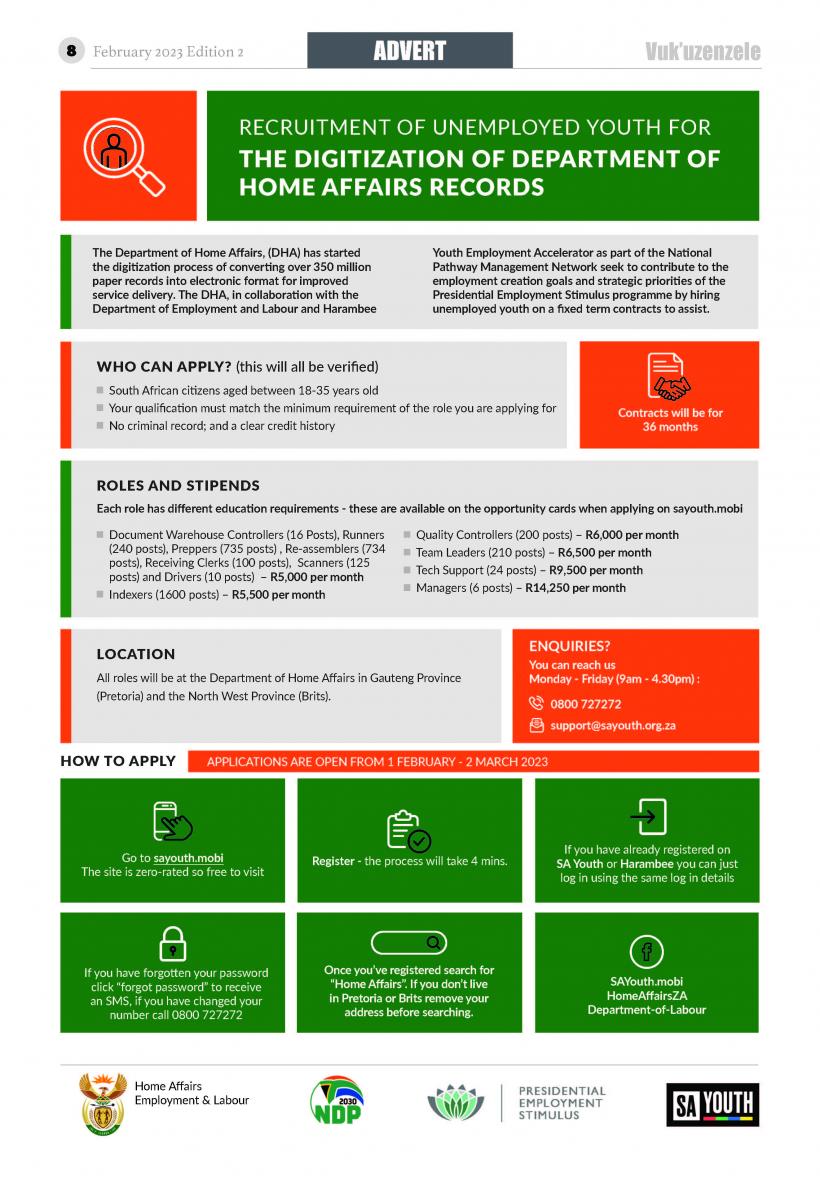
SA authorises roll out of COVID-19 boosters
SA authorises roll out of COVID-19 boosters tsoanaThe Department of Health says additional COVID-19 vaccine booster doses are now available for eligible citizens at all active vaccination sites across the country.
“This is in line with the announcement by Minister of Health, Dr Joe Phaahla, earlier this month that government has been inundated with requests from fully vaccinated members of the public, especially the most vulnerable groups, seeking to maintain and enhance their protection against current and evolving COVID-19 variants,” the department said in a statement on Monday.
This means all adults aged 50 years and older are eligible for five vaccine doses, while those aged between 18 and 49 will be entitled to receive another jab to make four doses of either the Johnson & Johnson (J&J) or Pfizer vaccine.
The waiting period between the last dose and this additional dose should be at least 180 days or six months.
All adults aged 18 and older who are registered on the Electronic Vaccination Data System (EVDS) as being immunocompromised will also be eligible to receive an additional booster dose 180 days after their last dose.
Meanwhile, the vaccination schedule for adolescents between 12 and 17 years remains unchanged, which means this age group remains eligible to receive two doses.
According to the department, the EVDS has been updated to accommodate these changes and vaccinators have been informed accordingly.
“The department has integrated COVID-19 vaccination services into primary health services, and efforts are being made, working with provinces to update the lists of vaccination sites on an ongoing basis and make these accessible to the public.”
The department believes that vaccination remains the most effective weapon against the pandemic, especially as new variants and sub-variants are detected in various parts of the world.
Those who experience known COVID-19 symptoms such as flu-like symptoms including body aches, tiredness, loss of appetite or taste loss are encouraged to visit a health facility. – SAnews.gov.za
SANDF provides opportunities to the youth
SANDF provides opportunities to the youth tsoanaWhen Sindisiwe Hlongwana (22) applied to be part of the South African National Defense Force’s (SANDF) Military Skills Development System (MSDS) she had no idea that she was also on a journey of making her dream of becoming a mid-wife come true.
Hlongwana who is from Durban, KwaZulu-Natal applied for the MSDS course in 2021 after she attended a career exhibition where she received the application forms from the SANDF.
“I had an interest to serve and we were also struggling at home financially. I realised that the MSDS programme would give me financial independence as well since the programme offered a stipend.”
The Military Skills Development System (MSDS) is administered by the SANDF is a voluntary service system that allows young South African citizens to serve in uniform. Young people who take part in this course also have an opportunity to further their studies within the military or develop their skills.
This year, the South African Army, South African Air Force, South Africa Navy and South African Military Health Services are calling on young people to serve.
Hlongwana says the MSDS programme has changed her life.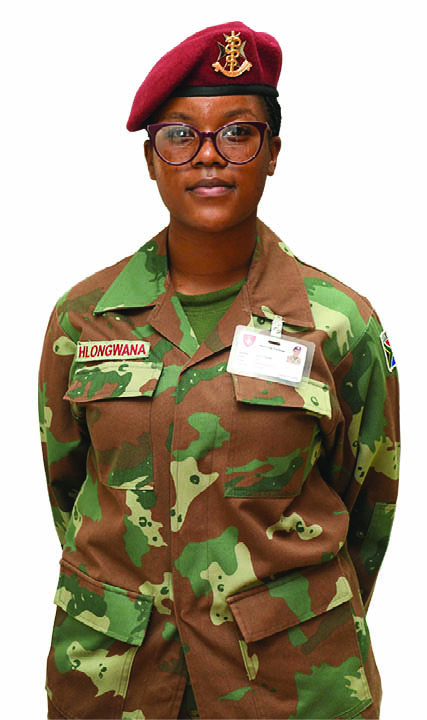
She is currently doing her first year towards a Diploma in Nursing at the South African Military Health Service Nursing College which is based at the Military Formation Training center in Centurion, Pretoria.
Her passion for caring for others and to serve communities inspired her to pursue her dream of owning a mid-wife clinic in the rural areas one day.
“People who live in rural areas need more help in delivering babies easier. That is where I want to serve,” says Hlongwana.
The MSDS is open for the 2024 intake
The MSDS has opened applications for new recruits nationwide, the closing date is on 28 February 2023.
The MSDS programme needs the following requirements;
- You must be a South African citizen
- Have no criminal record
- Meet medical and physical fitness requirements that are specified on the application form.
Applicants who are 18 – 22 years must have completed Grade 12, with the Admission Point Score (APS) as stipulated:
South African Army.
APS 17 and above, excluding Life Orientation (LO) - Level 4 Mathematics and Physical Science will be advantageous.
South African Air Force
General Musterings.
- APS 17 and above, excluding LO with specific subjects and levels as stipulated per occupation.
South African Air Force
Technical Trade
- APS 20 and above, excluding LO with Mathematics, Physical Science and English with at least level 4.
South African Air Force
Engineer
- APS 35 and above, excluding LO with Mathematics, Physical Science and English with at least level 4.
South African Navy
Combat, Technical Engineering
- APS 24 and above, excluding LO and Mathematics and Physical Science with at least level 4 for both subjects (NO Mathematical Literacy).
South African Navy
Support
- APS 24 and above, excluding LO with specific subjects and levels as stipulated per occupation.
South African Navy
Divers
- APS 20 and above, excluding LO and Mathematics with least level 3 (NO Mathematical Literacy).
Submariners
- APS 24 and above, excluding LO and Mathematics and Physical Science with at least level 4 for both subjects (NO Mathematical Literacy).
South African Military Health Service.
- APS of 24, excluding LO for all available occupations with specific subjects and levels as stipulated per medical/nursing occupation.
Applicants who are between 18- 24 years need to have the following for the MSDS 2024 intake
Completed Grade 12 with APS 20, excluding LO with specific subjects and levels as stipulated:
SA Air Force
Pilots/Navigators must possess Mathematics, Physical Science and English minimum (Level 4).
Commercial Pilot Licence (CPL) and Grade 12 with Mathematics, Physical Science and English minimum (Level 4).
Applicants who are between 18 - 26 years if in possession of a three (3) year Tertiary qualification (Degree, National Diploma or N6 with N4 and N5 prescripts);
SA Air Force (Engineers)
- Industrial Engineering
- Electronic Engineering,
- Civil Engineering,
- Mechanical Engineering and Aeronautical Engineering.
SA Navy (Engineering)
- Mechanical Engineering and Electrical Engineering.
SA Military Health Service.
- Public Relations and Journalism.
- Organisational Study.
- Medical/nursing occupations.
Application forms can be found in recruitment offices in each province across the country or on the South African National Defense website on www.dod.mil.za/document/form
There is hope after negative matric results
There is hope after negative matric results tsoanaTeen Suicide Prevention Week runs from 14 – 21 February and highlights awareness around teen depression and suicide, especially with the increased stressors such as matric results outcome.
During this time, SADAG focuses on creating awareness that teen depression and suicide are particularly high risk in South African teens.
SADAG encourages parents, teachers, and family members to know the warning signs of depression and suicide which include;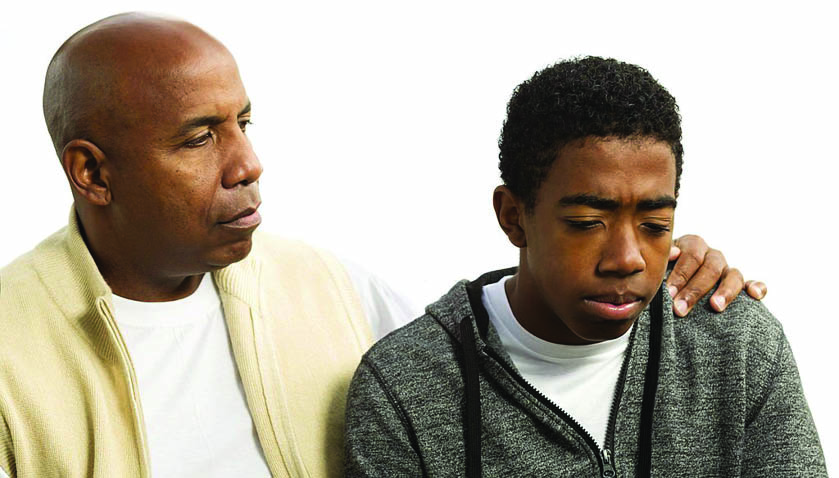
Talking or joking about suicide.
Depression or change in behaviour where a teenager becomes more withdrawn.
Drop in appearance and hygiene which includes not bathing.
Risk-taking behaviour such as consuming drugs and alcohol.
If you need help with your mental health or need someone to talk to, call the toll-free line 0800 567 567, visit www.SADAG.org.za, or SMS 32312
Top achiever’s sacrifices pay off
Top achiever’s sacrifices pay off tsoanaMnqobi Duphelezi (17) from Mtubatuba, KwaZulu-Natal has beat the odds and managed to get five distinctions in his matric year.
From the age of 15, Duphelezi moved out of home to stay by himself so that he could be close to a better school called Nondumiso High situated in Hlambanyathi which is about 61 kilometres from his hometown.
“There were no nearby high schools in my village, so I decided to move closer to Nondumiso High School by renting a room in Hlambanyathi so that I could study at night and attend morning classes,” says Duphelezi.
He says his parents supported him by paying his monthly rent, groceries and other school items through the child support grant that they receive from the Department of Social Development.
Duphelezi attributes his success to his teachers who 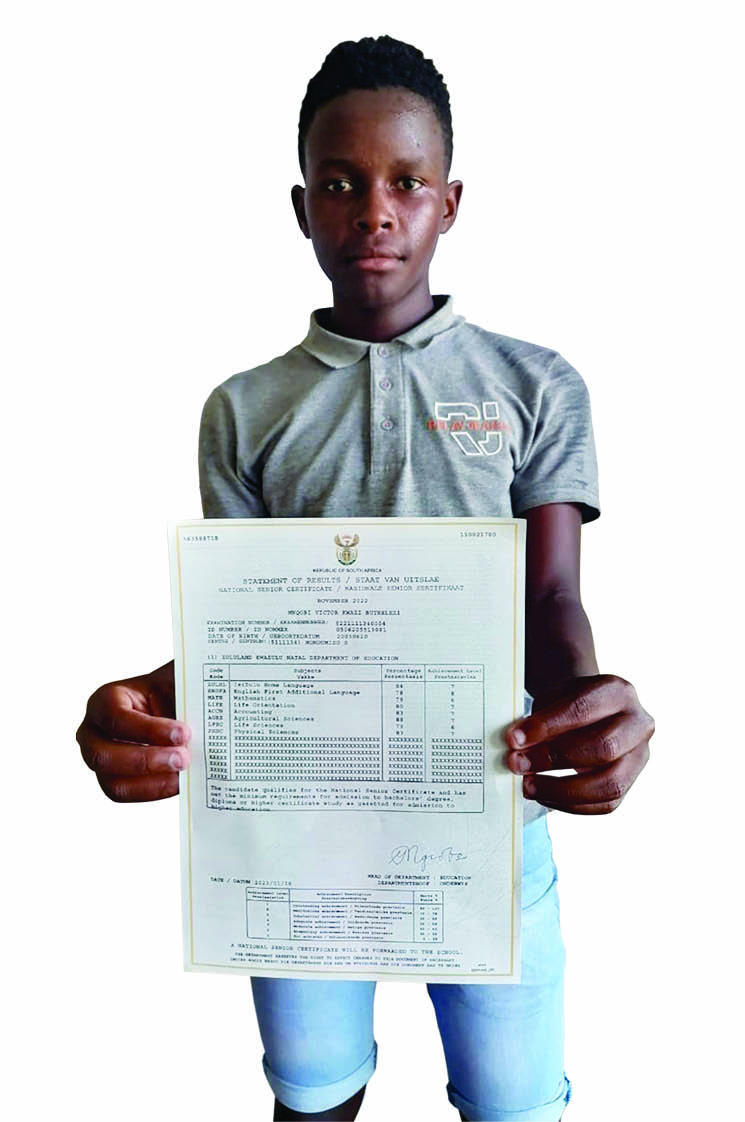 were a strong support system from grade 10.
were a strong support system from grade 10.
“The teachers did all they could to support us, the rest was left to us to study as much as we could. I wasted no time, once the teacher was done with the lesson, I would open my books and read what we were taught,” says Duphelezi.
Completing matric came with feelings of self-doubt for Duphelezi.
“I did not think I was going to do well in my matric year. I did not even apply for Pharmaceutical studies which are my dream because of the stress and anxiety I felt.”
Duphelezi says he opted for applying for Mechanical Engineering at the University of Kwa-Zulu Natal as his first choice because this course required lower requirements as compared to Pharmaceutical studies. “I was so surprised that I received five distinctions,” Duphelezi added that his application for funding by the National Student Fund Aid Scheme (NSFAS) has also been approved.
NSFAS provides financial assistance to qualifying students by paying for tuition fees, accommodation, study material and a monthly stipend.
Duphelezi advises the class of 2023 to focus on their studies to achieve their desired results which will help them to follow their dream careers.
He also encouraged those who did not pass Grade 12 to learn from their experiences and work hard.
078 776 8660 or call 0860 690 722
If you were part of the matric class of 2022 and did not receive the results that you anticipated, the South African Depression and Anxiety Group (SADAG) says it’s okay if things didn’t go as planned.
“This is not the end, no journey to success is an easy straight line.” It’s also important to speak to friends and family members for support and understanding of what you are going through,” said SADAG Clinical Psychologist Ryan Cooper.
SADAG also advised 2022 matriculants to talk to a trusted friend, teacher, or parent if they did not receive the results they anticipated.
“It’s a support structure that gets us through life. The more support structure you have, the more you can deal with devastating news or disappointments,” said SADAG Educational Psychologist Dr Elzette Fritz.
According to SADAG, those who did not pass grade 12 should ask themselves what options are available to them.
“There are always options. This can decrease the worries that can be amplified to anxiety,” said Dr Fritz.
SADAG also encouraged parents to empathise with their children who did not receive positive matric results.
“Try to put yourself in their shoes and imagine how they may be feeling. Ask them if there is anything you can do to help,” said SADAG.
WOZA matric 2023
WOZA matric 2023 JoySouth Africans who are interested in upgrading their grade 12 results, taking part in the Second Chance programme, or would like to get good marks in their matric year have an opportunity to be part of the WOZA matric programme.
 National Education Collaboration Trust (NECT) and the Department of Basic Education (DBE) joined forces and launched the Remote Digital Learning programme (RDL).
National Education Collaboration Trust (NECT) and the Department of Basic Education (DBE) joined forces and launched the Remote Digital Learning programme (RDL).
This was following the difficulties experienced in online learning during the different stages of lockdown as a result of the COVID-19 pandemic.
Fast forward to 2023, the campaign continues to address systemic learning challenges, digital inequality and system capacity constraints
The RDL campaign has assisted in bridging the learning gap by understanding learners' needs and how technology can play a role in learning journey.
The RDL campaign is also inclusive of the Tswelopele campaign which focuses on grades R to 11.
The Tswelopele and the WOZA Matric programme provide learning continuity, curriculum catch-up, support, revision and exam preparation through multiple digital and non-digital platforms for pupils, teachers and parents.
The Second Chance Matric Programme (SCMP) is a matric rewrite programme that was established in 2016 for learners who would like to improve their results or eventually complete their matric qualification on a part-time basis.
During 2021 an average of 5.8 million viewers watched WOZA Matrics on SABC 1 per month. In 2022 from March to October Tswelopele users between the ages of 4 - 65 have been reached with an average reach of about 1, 5 million viewers per month.
Last year 600 000 Grade 12s, including second chance learners and 600 000 General Education and Training Certificate learners were able to have more opportunities for psycho-social support, curriculum catch-up, revision, and exam assistance. Furthermore, 50 000 teachers and parents or caregivers were provided with opportunities to support their learners with catch-up and revision.
This information was supplied by the National Education Collaboration Trust (NECT)
For more information about these programmes visit the following websites:
www.education.gov.za/Curriculum/SeniorCertificate/SCRegistration
